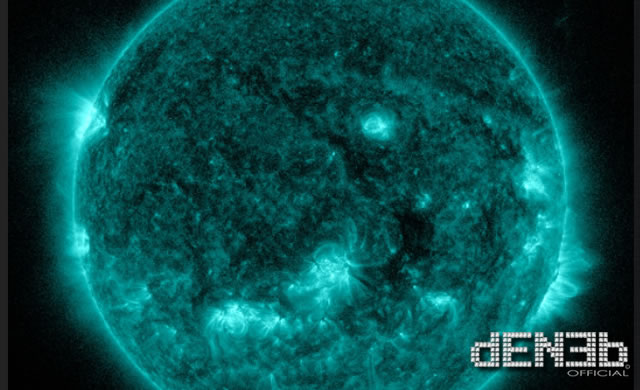
Credit: SDO/AIA
AGGIORNAMENTO: Il NOAA prevede il 20% di probabilità che si verifichino tempeste geomagnetiche intorno alle giornata del 15 Ottobre, in concomitanza con l’impatto sul nostro pianeta della nuvola di plasma rilasciata dal solar flare di classe M1, scaturito dalla regione solare AR1865. Con l’impatto sul nostro campo magnetico è probabile quindi si verifichino aurore alle alte latitudini. Skywatchers allertati!
Il nostro Sole sembra dare qualche segno di attività imminente e lo si ipotizza tramite l’osservazione di due macchie solari direttamente poste sul disco solare fronte Terra. Le regioni interessate sono AR1861 e AR1865 ed entrambe hanno campi magnetici con energia per sviluppare eruzioni anche di forte entità come i famosi brillamenti di Classe X.
Al momento si registrano solo piccoli eventi minori di Classe C, ma la situazione rimane sotto controllo. Nel frattempo siamo nel mezzo di una tempesta Radio con emissioni di tipo IV e II registrate nelle scorse ore e che stanno tutt’ora continuando, le quali indicano chiaramente il collegamento con possibile brillamento solare in arrivo. Mentre vi scrivo mi arriva la notifica di brillamento solare di Classe M1.7 relativo alla regione geoeffettiva AR1865, avvenuto nelle scorse ore, mentre il NOAA ribadisce l’allerta per nuovi possibili brillamenti.
Rimanete collegati per ulteriori informazioni.
UPDATE: NOAA Forecasters estimate a 20% chance of polar geomagnetic storms on October 15th when a minor CME (movie) is expected to hit Earth’s magnetic field. The cloud of plasma was hurled in our direction by an M1-class eruption from sunspot AR1865. High-latitude sky watchers should be alert for auroras.
A pair of sunspots pointing almost-directly at Earth pose a threat for strong solar flares. NASA’s Solar Dynamics Observatory photographed the two active regions, AR1861 and AR1865, on Oct. 12th. Both sunspots have ‘beta-gamma-delta’ magnetic fields that harbor energy for X-class solar flares.
So far, sunspot AR1865 is mostly quiet, but AR1861 is crackling with lesser C-class flares, possibly foreshadowing a bigger eruption. NOAA forecasters estimate a 40% chance of M-class flares and a 15% chance of X-flares on Oct. 12th.
Moderate M1.7 solar flare erupted from geoeffective AR 1865.
Issue Time: 2013 Oct 13 0804 UTC – ALERT: Type II Radio Emission – Begin Time: 2013 Oct 13 0711 UTC – Estimated Velocity: 688 km/s – Description: Type II emissions occur in association with eruptions on the sun and typically indicate a coronal mass ejection is associated with a flare event.
Source/Continue reading → SpaceWeather.com
Yes! We’ve got yet another hitting now! MT @denebofficial Thanks Tamitha, the situation is starting now to be more interesting!
— Tamitha Skov (@TamithaSkov) October 14, 2013





















